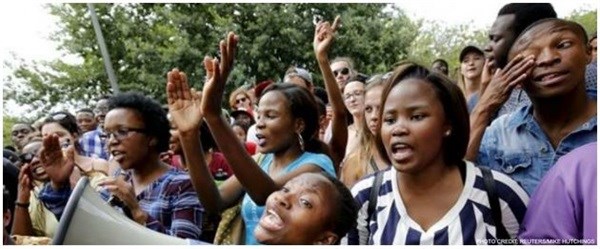
Agencies and companies that focus mainly on achieving the cool factor for their brands spend millions of Rands on producing campaigns and television commercials that creates talk-ability and hype for a month or two. On the other hand brands and companies that are able to perform at a higher level for a long period of time have marketing executives who's focus and vision goes beyond achieving the cool factor, they would often gear up their resources on innovation and producing products that are relevant to their target audience.
Being a marketing executive with a golden touch isn't about knowing what's popular now in youth culture. It's about knowing or anticipating what will be popular five months or even five years from now. Anticipating change in trends and aligning your brand to be relevant to your audience doesn't require agencies to employ soothsayer and not even rocket scientists. All it takes to achieve relevance is knowing and the awareness of your customer needs and wants.
As we all know history is the study of the past, however by being observant and analytical it can also give perspective in understanding the present market trends to gain insight in foreseeing the future trends.
According to David A. Aaker in his groundbreaking book Brand Relevance: Making Competitors Irrelevant, he defines the concept of brand relevance using dozens of case studies, Prius, Whole Foods, Westin, iPad explaining how brand relevance drives market dynamics. Aaker also reveals how these companies have made other brands in their categories irrelevant.

To achieve real growth is to develop offerings so innovative that they create new categories or subcategories making competitors irrelevant because they lack a "must have" feature or benefit to win the brand relevance competition.
Here below is an extract from the article compiled by the University of California, Berkeley 2012 and David A. Aaker.
Identify the "must haves"
The cornerstone of the brand relevance strategy is to identify concepts that have the potential to be a "must have" capable of defining a new category or subcategory. A "must have" will represent desirable benefits or associations that a meaningful segment will insist on having. Offerings that lack a "must have" will be excluded from consideration. A "must have" can take many forms, such as a unique attribute (Tide Coldwater), a lower price point (T.J. Maxx), a new application (Crayola Creativity), a combination of benefits (Colgate Total), the right design (Jaguar), a systems solution (Microsoft's Office), a personality (Virgin), a passion for the use experience (Harley-Davidson), an organizational culture (Nordstrom), or a variety of other characteristics.
It starts with generating a concept that potentially contains a "must have" that will define a new category or subcategory. To do so, an organization can find ideas from a host of perspectives such as looking at unmet customer needs, unintended applications, under-served segments, market trends, channel dynamics, role models in other industries or countries, or new technologies. The organization needs to make sure that the resources are devoted to idea search and that there is a process to turn the most promising ideas into potential new venture options.
Most organizations, however, will have enough ideas. The more critical step, then, is to identify and evaluate potential concepts that could deliver one or more "must haves." That involves two judgments that are fraught with potential issues.
Gone are days when being a cool brand gained you loyal customers, in todays competitive environment the only brands that continue gaining support from their target audience are brands that are relevant to the lifestyle of South African urban consumers. Racial segmentation marketing and LSM marketing are as backward thinking as companies and brands that use stereotypes in their communication.
Young people do not see each other in the same lenses as their parents did. What brings young people together is commonality on social issues, entertainment and youth culture as we've seen in the past weeks - #FEESMUSTFALL.
When it come to the youth, brand loyalty is a myth as they have no sense of loyalty to any brand; creating marketing strategies that evolve around objectives such as "customer loyalty" is a monumentally pointless task. For many decades marketers, hospitality and product designers have used traditional demographic segmentation approach - age, gender, location, income and more - to predict where their customers are heading, however this model is losing its relevance in today's market. The youth move with products or brands that are relevant to them at the time and importantly brands they feel understand them.
Consumer trends and behaviour is constantly changing and for brands to be on top of their game by being cognizant of consumer trends can help you get a handle on the rapid change in the marketplace.
Consumer trends are driven by core human fundamental needs, this includes but not limited to desire for security to the need for connection and self-improvement. It's about the opportunities they highlight and the successful, profitable innovations they can help you unlock. Know your brand, your capabilities and potential customers, and adapt accordingly. Just keep human needs at the core of your innovations!
If you are to take the time to examine trends in the last 15 years alone, you will realise that every three to five years a new trend emerged becoming more popular than the previous one. Brands that are not attuned to trends shift or those that are still holding on to their "this is how we do things" approach will never achieve relevance and subsequently will continue to suffer the Blackberry smartphone financially devastating fate. BlackBerry's decline has become a case study about what happens when a tech giant fails to innovate in a consumer-technology market evolving at breakneck speed.
The fundamental question your team should always need to answer is not how many new products or creative campaigns can we create, but "how can we create distinctive and valuable products and campaigns that our customers will love and relate to?"
Identify new behaviours, attitudes or expectations around these needs and you're on your way to identifying a new consumer trend. Relying on marketing textbooks knowledge only doesn't cut it in today's economic climate. Creating products or campaigns based on what your office employees think its relevant in youth culture will prove disastrous for your client's or brand's bottom line.
The marketing team needs to constantly revisit the objectives, strategy, innovation goals and track record. Further more they need to be obsessed with what competitors are doing imperatively so be cognizant of what customers want. The truth is very simple, without innovation your brand or service offering will not be able to grow and thrive.
No matter how successful your brand may be at the present, there is no guarantee of future success. The challenge is to break-through the natural assumption that future success is somehow guaranteed. Bureaucratisation is a state in which employees work increasingly by fixed routine rather than through the exercise of intelligent judgment.
With a firm commitment to innovation, brands will gain the confidence and vision required to become and remain consistently relevant.
Many companies are boxed in by constraints of their own bureaucratic stubborn mindset ideas about who they are and how they should compete, based solely on what they've done in the past. We see this trend with many major advertising agencies that still push the traditional method of pouring millions of Rands of their clients' money in their non-personal marketing traditional drain. Instead of moving with the times, they invented a buzz phrase called "Brand Amplification" in order to convince themselves that they are achieving the objective.
Pardon me for sounding ignorant; to this day I still don't understand why a 30 seconds television commercial is shot using 30 crew members, seven trucks, three locations and two days shoot. Well if the objective is to avoid tax this makes sense however if the objective is making more money for your client then this approach makes no sense at all especially when technology has simplified how we create and interact.
Alone you are limited (Internal + External TEAMS)
Understanding what is happening now requires a combination of book and street smart. To achieve great success major agencies need to employ or subcontract services to smaller agencies that are more in touch with the target audience. For example if you want to create a campaign targeted to youth in the township don't employ a dominantly white agency, rather partner with an agency that is township based or specialising in township marketing. By so doing you will be in a position where you can anticipate your customers' underlying wants and needs, even the ones they can't articulate yet.
Companies that operate as islands don't achieve remarkable results for their brands, however by employing ideas from external sources it shakes up internal structures opening space for more creative or innovative strategies. Videogame makers preview new titles with the toughest reviewers. Fashion brands offer influential bloggers sneak peeks of new collections, and craft beer makers organise "insider" tastings.
